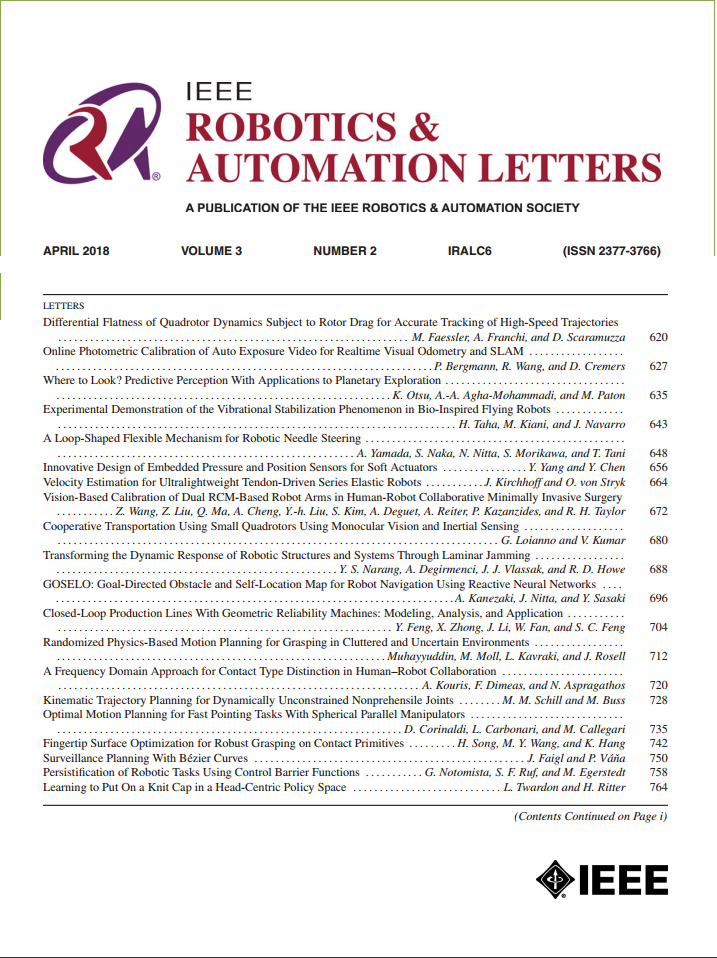Design and Control of a High-Performance Hopping Robot
IF 4.6
2区 计算机科学
Q2 ROBOTICS
引用次数: 0
Abstract
Jumping and hopping locomotion are efficient means of traversing unstructured rugged terrain with the former being the focus of roboticists; a focus that has recently been changing. This focus has led to significant performance and understanding in jumping robots but with limited practical applications as they require significant time between jumps to store energy, thus relegating jumping to a secondary role in locomotion. Hopping locomotion, however, can preserve and transfer energy to subsequent hops without long energy storage periods. However, incorporating the performance observed in jumping systems into their hopping counterparts is an ongoing challenge. To date, hopping robots typically operate around 1 m with a maximum of 1.63 m whereas jumping robots have reached heights of 30 m. This is due to the added design and control complexity inherent in developing a system able to input and store the necessary energy while withstanding the forces involved and managing the system's state. Here we report hopping robot design principles for efficient, robust, high-specific energy, and high-energy input actuation through analytical, simulation, and experimental results. The resulting robot (MultiMo-MHR) can hop over 4 meters or高性能跳跃机器人的设计与控制
跳跃运动是穿越非结构化崎岖地形的有效手段,跳跃运动是机器人研究的重点;这一焦点最近一直在变化。这一焦点导致了跳跃机器人的显著性能和理解,但实际应用有限,因为它们需要跳跃之间的大量时间来储存能量,从而使跳跃在运动中处于次要地位。而跳跃运动可以保存能量并将能量传递给后续的跳跃,无需长时间的能量储存。然而,将在跳跃系统中观察到的性能整合到它们的跳跃对应系统中是一个持续的挑战。迄今为止,跳跃机器人通常在1米左右运行,最大1.63米,而跳跃机器人已经达到30米的高度。这是由于开发一个能够在承受所涉及的力和管理系统状态的同时输入和存储必要能量的系统所固有的附加设计和控制复杂性。在这里,我们通过分析、仿真和实验结果报告了高效、鲁棒、高比能量和高能输入驱动的跳跃机器人设计原则。由此产生的机器人(MultiMo-MHR)可以跳4米以上,是目前最先进技术的2.4倍。
本文章由计算机程序翻译,如有差异,请以英文原文为准。
求助全文
约1分钟内获得全文
求助全文
来源期刊

IEEE Robotics and Automation Letters
Computer Science-Computer Science Applications
CiteScore
9.60
自引率
15.40%
发文量
1428
期刊介绍:
The scope of this journal is to publish peer-reviewed articles that provide a timely and concise account of innovative research ideas and application results, reporting significant theoretical findings and application case studies in areas of robotics and automation.
 求助内容:
求助内容: 应助结果提醒方式:
应助结果提醒方式:


